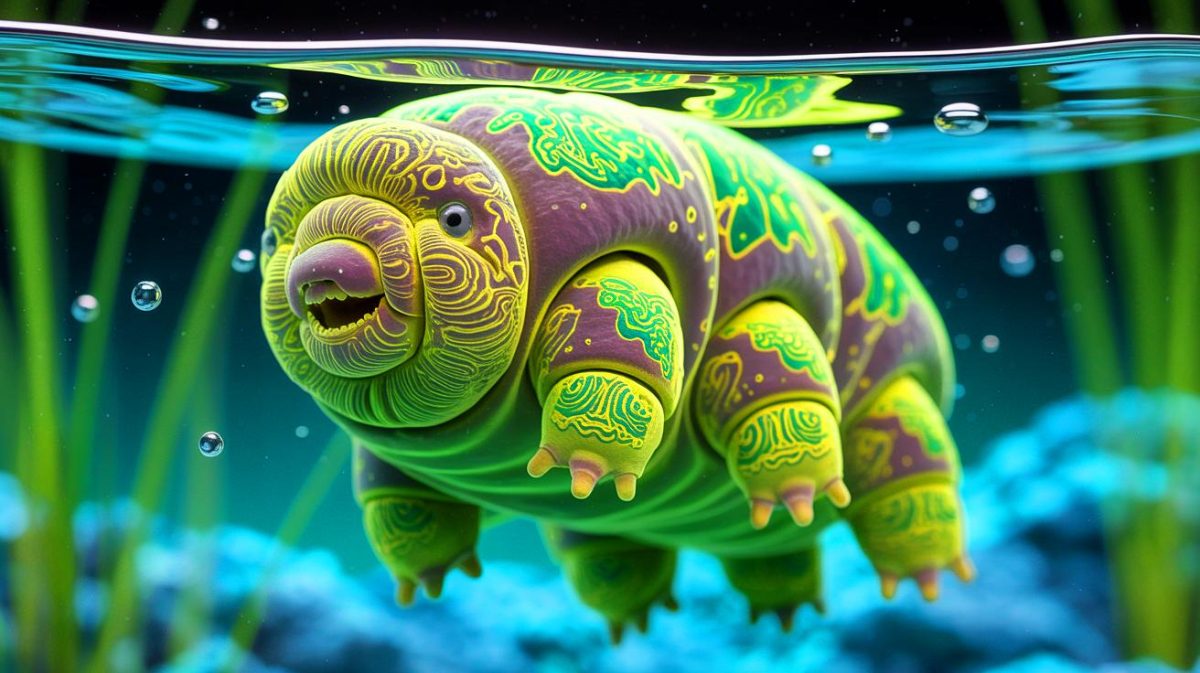| IN A NUTSHELL |
|
Tardigrades, often dubbed “water bears,” are captivating the scientific community with their incredible resilience and newfound role in advancing biological technology. These minuscule organisms, about 0.02 inches long, are renowned for their ability to withstand extreme conditions, from the bone-chilling void of space to the crushing depths of the ocean. Now, researchers have successfully given these resilient creatures “micro tattoos” through an innovative process that uses advanced microfabrication techniques. This breakthrough not only highlights the robustness of tardigrades but also opens new avenues in the field of living electronics and bioengineering.
Revolutionizing Microfabrication with Ice Lithography
The field of microfabrication is witnessing a transformative shift with the introduction of ice lithography, a cutting-edge technique redefining how devices are integrated into living systems. This process involves projecting an electron beam onto a thin ice layer that covers living tissue. As the ice layer evaporates, it leaves behind intricate patterns etched onto the tissue, showcasing the potential of microfabrication in living organisms.
The experiment began by inducing a state of suspended animation in the tardigrades. By carefully drying them, the researchers froze the organisms to a frigid -226 degrees Fahrenheit and coated them with anisole, a protective substance. This layer served as a canvas for the electron beam, which meticulously etched patterns onto the tardigrades. Upon warming, the anisole formed a biocompatible material, creating the micro tattoos. This process holds the promise of revolutionizing medicine and bioengineering by ensuring safe and effective applications within living organisms.
The Resilience of Tattooed Tardigrades
One of the most astonishing aspects of this study is the survival rate of the tattooed tardigrades. Approximately 40% of these organisms endured the micro tattooing process, underscoring their extraordinary resilience and adaptability. Researchers are optimistic that ongoing refinements could significantly improve this survival rate. Remarkably, the tattooed tardigrades displayed no noticeable changes in behavior after tattooing. Once rehydrated, they continued their usual activities, seemingly unaffected by their new adornments.
This pioneering demonstration of the technique unlocks exciting possibilities. Scientists foresee a future where micro-electronics or sensors can be printed directly onto living tissue, heralding a new era of biomaterial devices and biophysical sensors. Some patterns etched onto the tardigrades were as small as 72 nanometers, demonstrating the precision and potential of this technique in bioengineering advancements.
Pioneering Advances in Living Electronics
The successful application of ice lithography on tardigrades marks a pivotal moment in the development of living electronics. Researchers believe that this technology could be extended beyond tardigrades to various living organisms, including bacteria. Ding Zhao, a co-author of the study from Westlake University in China, highlighted the broader implications. By enabling the creation of micro-tattoos on diverse living organisms, the research sets the stage for future advancements in bioengineering.
Gavin King, the inventor of ice lithography, praised the study’s potential to turn science fiction into reality. The ability to pattern living matter could lead to the development of microbial cyborgs and revolutionize biomedical applications. As researchers continue to refine the technique, the possibilities for integrating microfabrication with living systems appear boundless, promising a future where technology and biology seamlessly intertwine.
Future Prospects for Tattooed Tardigrades
The findings, published in the journal Nano Letters, mark the beginning of an exciting journey toward harnessing microfabrication in living systems. Researchers hope that the work with tattooed tardigrades will inspire further exploration and innovation. From creating microbial cyborgs to enhancing biomedical technologies, the potential applications are vast and varied.
As we gaze into the future, the question arises: How will these advancements in living electronics reshape our understanding of biology and technology? The journey of the tattooed tardigrades is just the first step in a thrilling exploration of the intersection between life and technology. What other incredible possibilities lie ahead?
Did you like it? 4.5/5 (20)








Wow, tattooing tardigrades? What will scientists think of next? 🤔
Is this safe for the tardigrades? I hope they’re okay after the process!
Can we start tattooing other animals now, or is it just these little guys?
This is both amazing and a bit scary. Where do we draw the line with bioengineering?